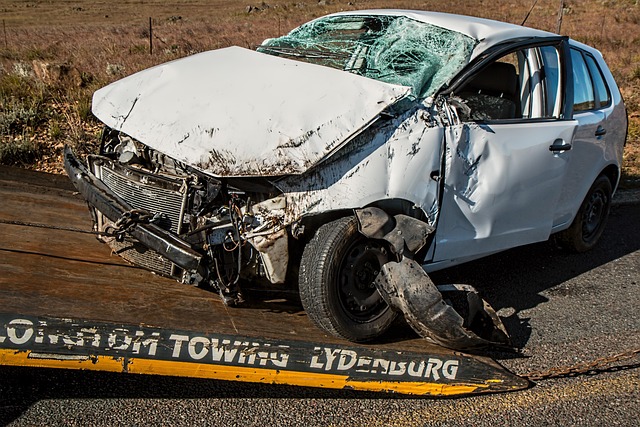Car insurance is a crucial aspect of vehicle ownership, offering protection against accidents, theft, and damage with various coverage options. Policies differ based on individual factors like age, driving history, location, vehicle type, and make. Understanding these dynamics allows drivers to choose the right level of protection. Key types include liability, comprehensive, and collision coverages, each with customizable deductibles. A clean driving record generally leads to lower premiums, while violations or accidents increase costs. Regular policy reviews and comparing quotes from multiple insurers can help save money. The claims process involves reporting an incident, assessment, negotiation, settlement, and repair coordination.
Looking for comprehensive car insurance that suits your unique needs? In today’s diverse automotive landscape, ensuring adequate protection for any vehicle model is essential. This guide navigates the intricate world of car insurance, empowering drivers with knowledge. We debunk common myths, explain policy types, and offer insights into claims processes. By understanding how driving history impacts premiums, you can make informed choices to secure affordable coverage for your beloved vehicle.
Understanding Car Insurance: What You Need to Know

Car insurance is a crucial aspect of owning and operating a vehicle. It provides financial protection against unforeseen events such as accidents, theft, or damage to your car. Understanding what car insurance covers is essential for making informed decisions about your coverage options. Comprehensive car insurance typically covers a wide range of risks, including collision, liability, medical expenses, and more. Collision coverage helps with repairs or replacement if your car is damaged in an accident, while liability insurance protects you from financial responsibility if you cause harm to others or their property.
When choosing car insurance, it’s important to consider factors like your driving record, the make and model of your vehicle, and your budget. Different cars may come with varying levels of standard coverage, so comparing policies from various providers can help you find the best fit for your specific needs. Additionally, understanding deductibles—the amount you pay out-of-pocket before insurance kicks in—can significantly impact the overall cost of your policy. By being informed and proactive about car insurance, you can ensure that you’re adequately protected on the road.
Why All Car Models Deserve Equal Coverage

Every car, regardless of its make or model, deserves equal protection under car insurance policies. The rationale behind this is twofold. Firstly, car insurance isn’t just about protecting a vehicle; it’s also about safeguarding individuals who depend on it for their daily commutes and overall well-being. A safe driver should not be penalized with higher premiums simply because they own a particular model that statistically has fewer claims.
Secondly, offering equal coverage promotes fairness in the insurance industry. Differentiating policies based on car models can create loopholes and encourage manufacturers to focus on enhancing safety features for select models while potentially neglecting others. Ultimately, this benefits no one, as it leaves drivers with less-than-ideal options and increases the risk of accidents across the board.
Common Myths About Car Insurance Debunked

Car insurance is often shrouded in myths and misconceptions, leading many drivers to believe falsehoods about what coverage entails. One common myth is that car insurance is one-size-fits-all, assuming all vehicles are equally risky to insure. This couldn’t be further from the truth; policies vary greatly depending on factors like age, driving history, location, vehicle type, and make. For instance, classic or antique cars may have different coverage needs than modern sedans or SUVs.
Another debunked myth is that insuring a newer car is always more expensive. While it’s true that new vehicles tend to be more valuable and thus costlier to insure, age isn’t the sole determiner of premium. Factors like safety features, fuel efficiency, and ownership history play significant roles in pricing. Many modern cars come equipped with advanced safety technologies that can actually lower insurance costs due to their collision avoidance and reduction capabilities.
Types of Car Insurance Policies Explained

Car insurance is a crucial aspect of owning a vehicle, offering financial protection in case of accidents or other unforeseen events. There are several types of car insurance policies available, each catering to different needs and budgets. Understanding these options is essential for making an informed choice.
The most common types include liability coverage, which protects against claims arising from accidents caused by the insured driver. Comprehensive insurance goes a step further, covering a wide range of events such as theft, natural disasters, and vandalism. It’s a comprehensive option for those seeking complete peace of mind. Additionally, collision insurance specifically covers damage to the insured vehicle resulting from collisions with other objects or vehicles. These policies can be customized with various deductibles and coverage limits, allowing drivers to tailor their protection according to their specific requirements.
How to Choose the Right Coverage for Your Vehicle

Choosing the right car insurance coverage is a crucial step in ensuring your vehicle and its occupants are protected. The first step is to understand what different types of coverage exist. Typically, car insurance includes liability, which covers damages caused by accidents, as well as comprehensive and collision, which protect against more specific incidents like theft or weather damage. Assessing your risk profile and the value of your car helps in selecting suitable limits for these coverages.
Next, consider your driving history and habits. Safe drivers with clean records often qualify for lower premiums. Additionally, if you drive a high-value vehicle or one that is prone to certain types of damage, specialized coverage might be needed. Regularly reviewing your policy and keeping up-to-date with changes in your circumstances, such as moving to a new area or purchasing a new car, will help ensure you have the most appropriate insurance for your needs.
The Impact of Your Driving History on Premiums

Your driving history plays a significant role in determining car insurance premiums. Companies carefully assess your past driving record to gauge your risk as a driver. A clean driving record generally translates to lower premium costs, as it indicates responsible and safe driving habits. Conversely, a history of accidents, moving violations, or severe infractions can lead to substantial increases in your insurance rates.
The impact extends beyond individual incidents; consistent patterns in your driving history are closely examined. For instance, repeated speeding tickets or a history of at-fault accidents will raise your premiums. Insurance providers use these data points to calculate your potential risk, ensuring that their pricing aligns with the level of coverage required to protect against potential losses associated with risky drivers.
Tips for Saving Money on Car Insurance

Saving money on car insurance is a smart financial move for any vehicle owner. One effective strategy is to compare quotes from multiple insurers before settling on a policy. Different companies offer varying rates, so shopping around allows you to find the best deal that aligns with your budget. Remember to provide accurate information and consider all coverage options to avoid unnecessary expenses.
Another tip involves maintaining a clean driving record. Traffic violations and accidents can significantly impact your insurance premiums. Staying safe on the road, adhering to traffic rules, and avoiding risky behaviors can help keep your rates low. Additionally, bundling multiple policies with the same provider often results in significant discounts, so consider insuring your car along with other policies you hold with that company.
A Comprehensive Look at Claims and Their Process

When it comes to car insurance claims, understanding the process is crucial for any vehicle owner. The journey begins with reporting an incident to your insurance provider, whether it’s a minor fender bender or a severe accident. From there, the insurer assigns a claims adjuster who will assess the damage and gather relevant information. This includes details about the incident, statements from witnesses, and photographs of the affected areas.
The claims process involves several steps: appraisal, negotiation, settlement, and repair. During appraisal, the adjuster inspects the vehicle and determines the cost of repairs or replacement. Negotiation occurs when the adjuster discusses the estimate with you to reach an agreed-upon figure. Once settled, the insurer facilitates the repair by coordinating with a trusted repair shop or dealing directly with the garage you choose. Finally, after the work is completed, they settle the remaining balance, ensuring your vehicle is restored and your financial needs are met.
